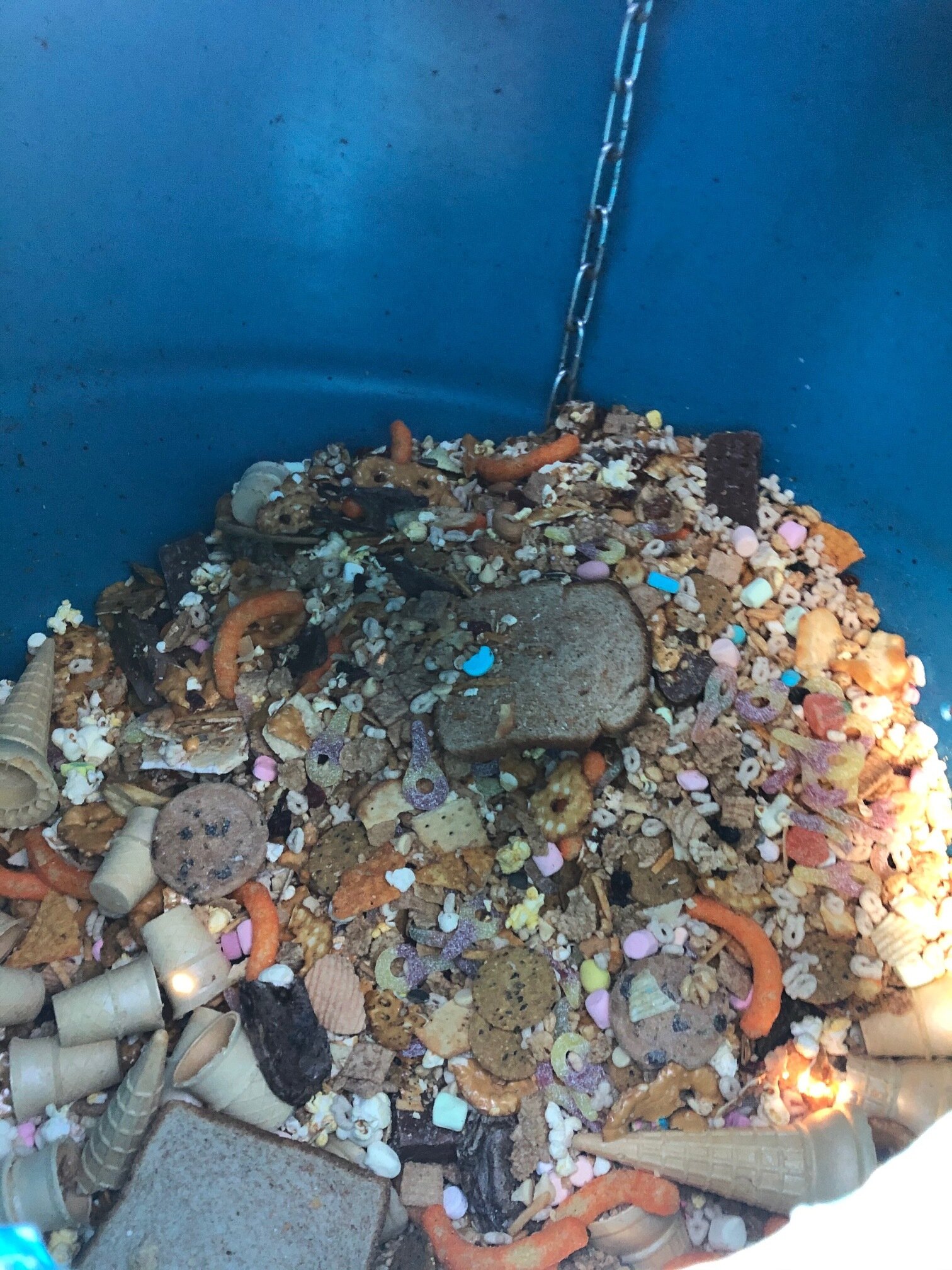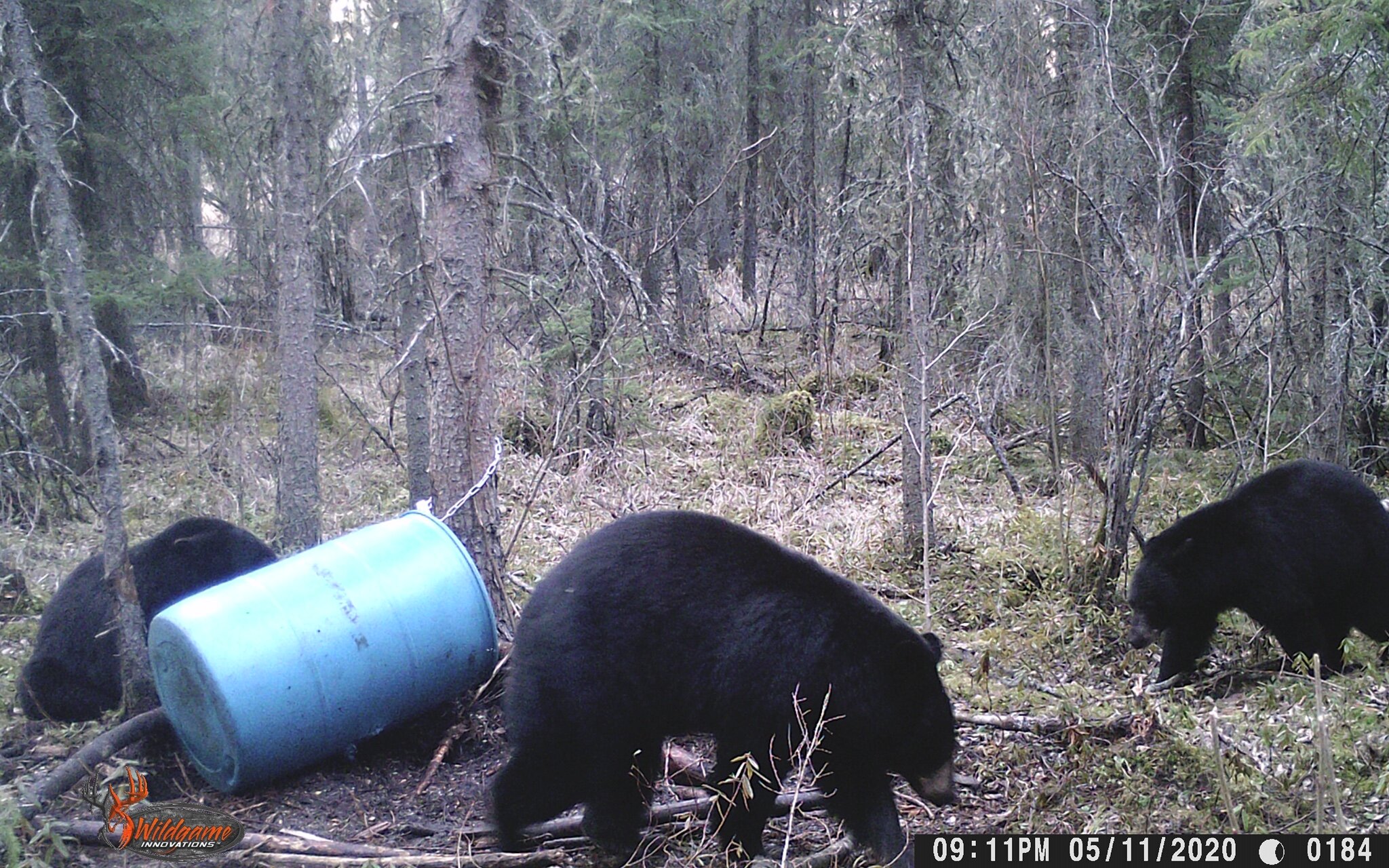Bear Baiting 101
I’d like to start off by saying the information provided is vague for set ups across North America. Regulations on baiting vary from state to state in the U.S. and province to province in Canada. Some states do not allow barrels or certain baits such as chocolate. It’s extremely important to check your local regulations before using any information provided.
Location:
The most important part of baiting bears is location. Most of your time should be spent finding an area that has a high density of bears. I like to look for three main indicators with the first being a supply of fresh water. Bears like to be close to fresh water as they obviously need it to drink but it also brings them food options such as beavers and muskrats. The second thing you want to pay attention to is availability of natural food. An area that holds a lot of blueberries is huge as bears will stay close to this food supply. Thirdly, you want to look for sign that bears are in the area. You can do this by scouting and watching for bears or looking around for scat and tracks. Bear scat is large and easily identifiable.
Bait:
Once you have found an adequate area you need to determine what kind of bulk bait you will use. Common choices are a combination of donuts, bread, muffins, popcorn, oats, dog food and meat scraps. Now before you choose your bait you need to take into consideration the access you can get to the area you are hunting. Can you reach this area by OHV or are you hiking in? Popcorn is an incredibly effective bear bait and is light weight for hikers. You can strap a garbage bag of popcorn to your pack and barely notice it’s there. It is also the most cost-effective bait option if you don’t have a free supply of scraps. You can also make popcorn more attractive by mixing it with Jello powders, sugar, syrup, juice mix or just about anything you can think of.
Now, in order to ensure bears find your bait you will need a heavy scent to get them coming in. One option that is very popular are beaver carcasses. Beavers stink and bears just plain love them. They are usually sold by trappers once the hides have been removed for a cheap cost. They work great however they are heavy and you will need a cage or system to keep them high so the bear can’t simply grab it and drag it off for a quick meal. The alternative to this and my favorite method is a scented spray available through many companies online and at your local sporting goods store. Bears love a sweet smell and can’t resist it so any of the following work great: anise, vanilla, butterscotch, fruity flavors, and chocolate. Take this spray and walk around your baiting area and spray it high in trees so the wind will carry the smell through the entire valley. You can save on cost by buying artificial vanilla extract and adding it to water in a spray bottle.
Using the first bears that find your bait is key. You want those bears to continue to disperse the scent which will allow other bears to get in on the action. How I accomplish this is by using grease and cooking oil. Save your oils and grease from your cooking for a season and usually you will have enough. It is also easy to stop at a local restaurant in your area and ask for permission to get oil out of their oil bin. Take the oil and grease and pour it on the ground surrounding your bait and on the barrel. This will get all over the bears paws and when they leave it will create a scent trail to your bait for other bears to follow. They also tend to roll in it and get completely covered in it.
Set up:
Basically, the two options for hunting bears over baits are tree stands and ground blinds. I highly recommend new bear hunters use tree stands. Ground blinds allow more space and make sitting for long hours more comfortable but they have draw backs. Bears will see you and any movements you make much easier and if you're easily intimidated by bears, you may shoot a smaller bear if it gets too close for comfort. Tree stands put you at a safe distance and make it easier to take the bear you want. I highly recommend setting up within 30 yards of the bait. Personally, I’m always between 20-30 yards making shot placement with a bow or rifle is much easier.
You must also consider the set up of the bait. I prefer to have it in barrels which slows down how fast the bears empty them, but some states and provinces restrict the use of barrels and make you use natural containment such as hollowed out logs. The bait should be surrounded by deadfall and brush to lead the bear where you want it. The sticks and logs should be positioned to force the bear to eat the bait with it broadside to allow ethical shot placement. If you skip this step you may not have a chance at a clean shot as bears like to lay down to eat.
Tips and tricks:
Baits should be filled every 2-3 days when possible. You can take more time in between but if you wait too long with an empty bait, big bears will move on.
Nocturnal big bears are also a common issue. A lot of hunters get big bears on trail cameras that come in to feed in the night only. If your having this problem create a battle for supply. Cut back on the amount of bait you are putting out when you're getting close to the time you want to hunt. This will make it so the big bears are forced to come out during the day to eat and push the small bears off or there will not be any food left for them in the evenings.
Trail cameras in states which allow them are another quality tool. They will give you the important information such as time of day bears frequent the bait and the size of the bears. This will help you determine when to sit on the bait and which bait is more productive when running multiple bait sites.
I hope all this helps in your upcoming bear season!
-Rob Redmond, Fall Obsession Field Staff




